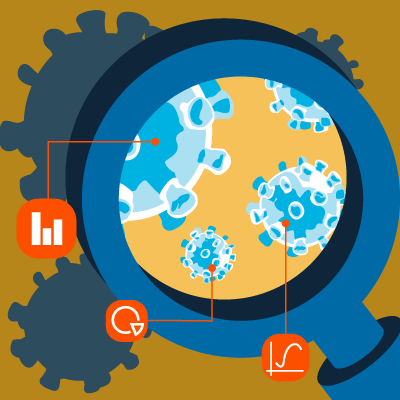Machine learning (ML) is emerging as a useful, though complex, tool supporting automation and advanced risk analytics. ML can help us understand how to quantify mortality risk and can provide a clearer view of future risk to support business growth.
While traditional underwriting practices involve lengthy client questionnaires and medical tests, the industry is now moving to meet newer generations' expectations with low-touch “accelerated underwriting.” While these technologies may feel less invasive to customers, their data collection brings potential for greater post-bind risk.
Businesses are also facing challenges in accurately assessing the core risk profile of people. Recent trends such as growing obesity risk, e-cigarette use, and opioid abuse are not captured well by traditional static mortality tables, whose life expectancy projections are based on historical data. These tables are often limited, potentially built with simpler data, with aggregate views that don’t consider key differences among individual insureds’ unique and underrepresented profiles in historical data. They can employ complex adjustment systems for adding or subtracting overall mortality risk, requiring hard-to-find expertise.
The results of these limitations are numerous. Underwriting is often performed to meet minimum criteria. The lack of adequate data can lead to businesses over- or under-valuing the risk. With difficulty seeing the bigger picture, firms may be reluctant to diversify, and instead try to hyper-focus on an individual market and product, which often leads to doubling down on similar risks and becoming over-exposed.
If we knew more about the attributes of insureds in portfolios and their quantifiable impacts to overall mortality risk, we could make better risk decisions. To meet these challenges, the industry is increasingly turning to tools that apply machine learning, including the advanced stochastic modeling incorporated in our Life Risk Models.
Applying ML Techniques to the Life and Pensions Markets
While it may be newer to the life insurance industry, machine learning is used widely in other fields to develop analyses and provide additional insights. For example, Amazon uses ML algorithms to constantly analyze what it knows about individual users—age, gender, and location, purchase and search history, etc.—in combination with their accumulated knowledge of the larger population, to drive sales and offer products that the consumer is likely to buy. ML can be similarly applied in the life and pensions market.
ML is considered a part of artificial intelligence and, as the name suggests, is concerned with programmed systems that are capable of learning. It is useful for assessing "big data" sets, where each data element tells us a bit more about each other element. By finding and testing potential meaningful correlations, it can find information that the analyst did not even know to look for. As it learns what correlations should get more weight in relation to other factors, ML helps sift through what may be competing information.
Traditional statistical analytics (e.g., multivariable linear and non-linear regression) are limited by the data, the intuition of the modeler, and the insight a modeler is able to derive; complex relationships between data points also limit the abilities of the modeler. ML has the advantage of being able to take on highly complex relationships and is often, but not always, better at predicting outcomes.
To apply ML effectively, however, involves carefully addressing complex testing parameters. The modeler must understand how to configure inputs in a way that makes sense, and how to uncover difficulties the ML model may have in discerning some correlations. Ensuring repeatability of outcomes with subsequent testing is not guaranteed, which highlights a major concern of ML—overfitting. This is clearly an issue in all modeling but can be—and often is—more challenging to detect and remove. And all of this takes significant computing power to run.
In building our Life Risk Models, we employed ML to break down mortality information to provide the best possible estimation of risk. In designing stochastic mortality models, ML lets us ask, “what behaviors and other correlated factors can affect mortality in ways we might not have known to look for?” We know mortality is affected by numerous factors such as geography, age, sex, medical history, current medications, income, family history, personal responsibility, and personal connectedness. ML gives us tools to assess these data sets more dynamically, often increasing our ability to draw in data that might be omitted with more traditional approaches.
Non-traditional data sources such as social media and marketing data can provide information on lifestyle aspects, such as whether a person might be a skier, ride a motorcycle, or have unhealthy eating habits. Expertly applied, ML is what allows our stochastic model to effectively assess this complexity to provide a detailed understanding of the drivers of mortality risk at the individual and portfolio level.
Speed and Confidence
With increased speed and precision, ML applications tailored to the life insurance and pensions industries are helping us leverage new data sets and rethink mortality risk. As the size and number of available data continue to grow, meeting these technology shifts is key to future success, and will require new skill sets and new ways of doing business.
Today, most underwriters, actuaries, claims analysts, and enterprise risk managers are making decisions on their own, but these internal siloed decision-making structures may hamper the ability to leverage new technologies. Data scientists can work collaboratively across the company, using tools such as our Mortality Projection Model to help provide understanding on the risks being taken on, target marketing, and design entries for new markets with speed and confidence.
Learn more about our Life Risk Models



